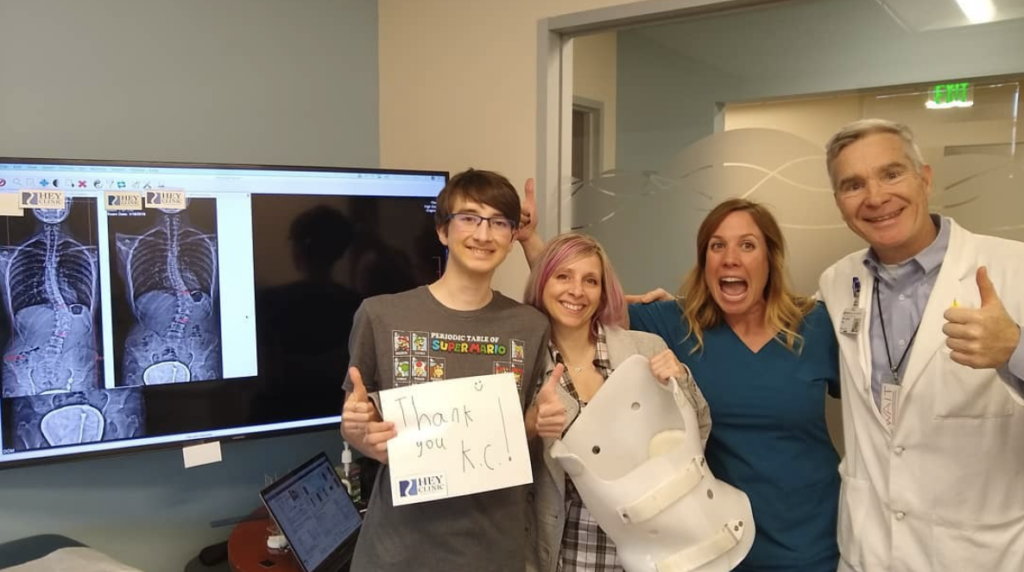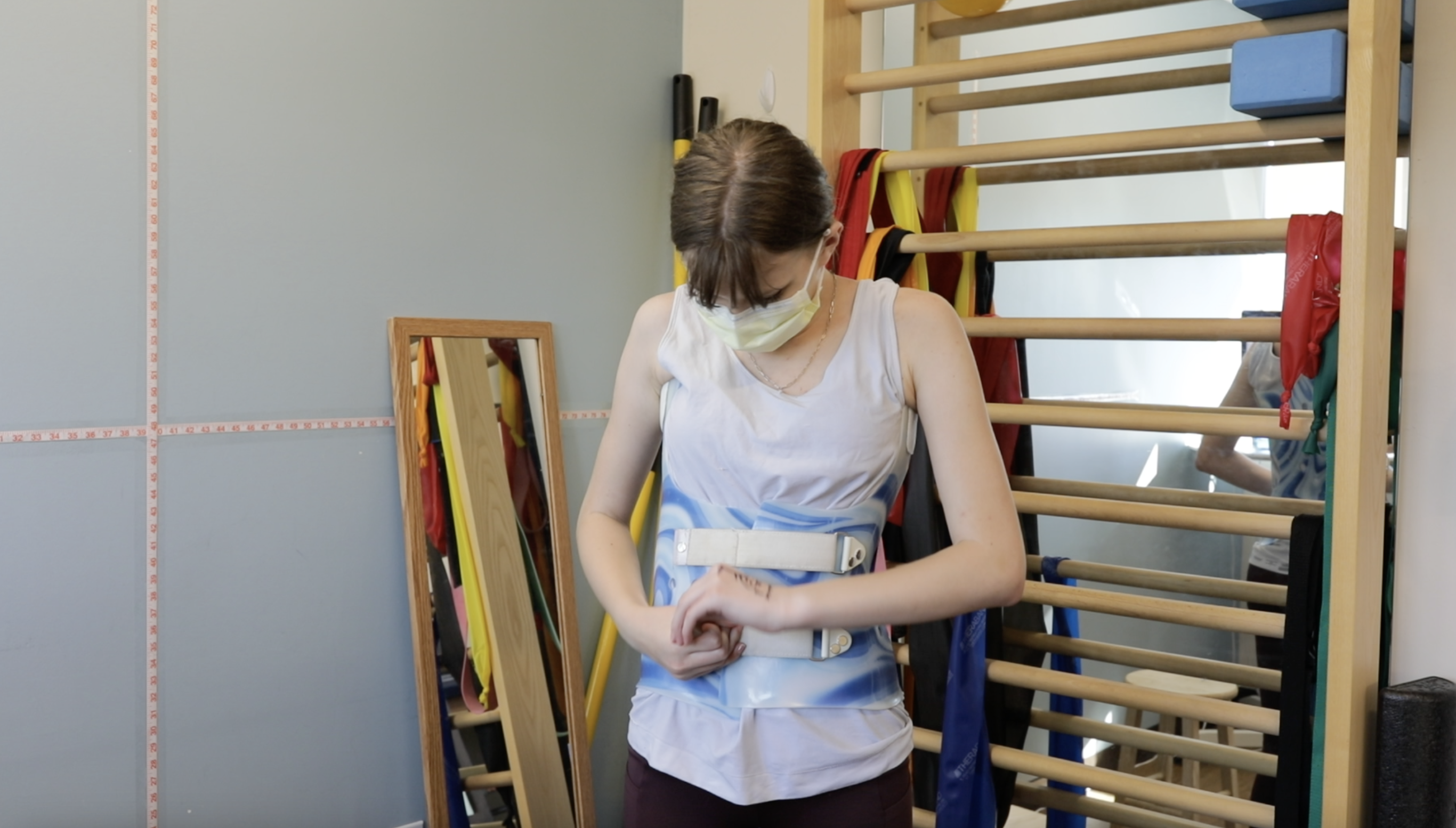Your child’s scoliosis diagnosis may come as a surprise. It seems to come out of nowhere, noticing a bit of rotation by their pediatrician during a regular forward bend-test in their annual physical exam.
The onset of puberty may cause an insignificant curve to progress rapidly, suddenly making it noticeable.
While it is usually not a sudden development, it can often be a surprise.
This shock of diagnosis should not be cause for alarm. Do your research to determine the best course of action for your child and your family. When choosing a treatment plan evaluate your time commitment, any expenses, and your child’s expected compliance to determine the best plan for you.

Depending on the size of your child’s curve and where they are in development, different treatment options may be suggested. If the curve cobb angle is measuring in the low to mid 20’s, Schroth physical therapy may be recommended as well as bracing. If the curve cobb angle is approaching 25-35+ degrees, bracing may be suggested in conjunction with Schroth physical therapy.
Types of Braces
There are several different types of scoliosis braces available, and you must determine which is most likely to be compatible with your child.
- Some braces are worn at night and may be the best choice for your child’s curve type, while others are worn 18-23 hours/day and may be a more appropriate treatment to achieve the best results.
- Braces are also designed for different goals in mind. Some braces are best for preventing curve progression while others are able to reduce curves.
- Brace designs are different as well, as some open in the back while others open in the front.
- You will also find that some braces are covered by insurance while others are not.

There are many factors to consider.
It’s OK to give yourself time after a diagnosis to digest the information. If you jump into treatment options too fast, you may find there was another option that would have better suited your family. Do your research so you may make an informed decision. Ask friends if they know anyone who has scoliosis and what route they chose. You may be surprised how many other children your child’s age are dealing with the same issues.
Factors to consider when choosing a brace
In summary, there are several important factors to consider when making an informed decision about scoliosis bracing:
- What type of brace is being recommended based on your child’s curves?
- How does the brace go on?
- Do you want your child to have independence in wearing a brace that opens in the front such as the Rigo-Cheneau style brace made here at Hey Clinic?
- Or do you need to prevent your child from taking the brace off and need a brace that opens in the back?
- Does your child care if the brace will show beneath their clothes?
- Thinner braces, such as ours, without thick padding are lower profile and much less noticeable while dressed.
- Is your child’s curve rigid and maintaining the scoliosis curve is satisfactory or is correction of a flexible curve desirable, such as is attainable with our 3D CADCAM Rigo-Cheneau style brace.

Take the time to understand your recent scoliosis diagnosis. Give yourself time to decide which way to proceed. Ask questions. Do your research. And should you decide to see all your providers in one location (including Physician, Physician Assistants, Physical Therapists and Certified Orthotist), we are happy to help coordinate appointments for you to streamline your care.
If you would like to receive more information on bracing options for treating scoliosis, call or make an appointment with one of Hey Clinic’s spine specialists today

